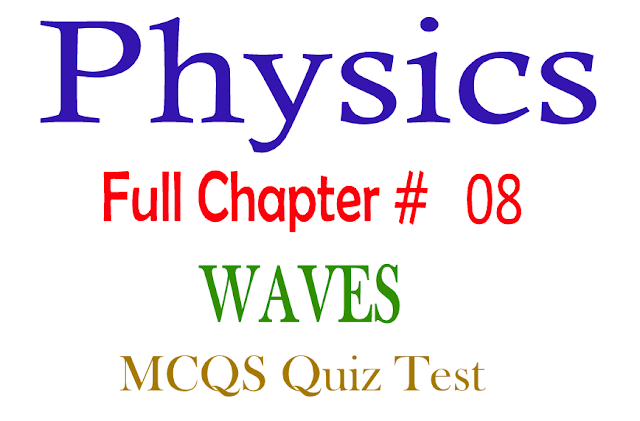If you are looking first Year Chapter Eleven Physics HEAT AND THERMODYNAMICS Chapter Wise MCQs question answers, You are here on right website all of these Multiple Choice Question answers are helpful for learning exams MCQs Questions with solutions. Learn these important Key points for upcoming board exams and tests preparations.
 |
| 1st Year Physics Chapter 11 MCQs Quiz Test |
On this website you will learn first Year Physics Unit Eleven HEAT AND THERMODYNAMICS MCQs with solved Answers. Mostly past papers important MCQs are helpful for getting better marks. You will easily learn this chapter by learning these solved MCQs of Heat and Thermodynamics.
Important Key Points You Will Learn in Chapter Eleven:
- Kinetic Theory of Gases
- Internal Energy
- Work and Heat
- The first law of Thermodynamics
- Molar Specific Heats of a Gas
- Reversible and Irreversible Processes
- The second law of Thermodynamics
- Carnot Engine and Carnot’s Theorem
- Petrol Engine
- Entropy
- Become minimum
- Become maximum
- Become zero
- None of these
- How much heat a body contains
- Whether a body will feel hot or cold to touch
- In which direction heat will flow between two systems
- How much total absolute energy a body has
- Over a wide range of temperature, its expansion is uniform
- It does not stick to the thermometer glass
- Its boiling point is high
- All of the above
- The temperature of water at 00C and 1000C
- The temperature of melting ice and boiling water at atmospheric pressure
- The temperature of ice-cold and boiling water
- The temperature of frozen and boiling mercury
- The volume of n mole of gas
- Mass of 4g of gas
- Mass of 2gm of gas
- The volume of 2 moles of gas
- Mercury takes a long time to contact
- The amount of mercury use is very small
- The capillary tube has a small constriction near the bulb
- The capillary tube is very narrow
- 37oC
- 42oC
- 55oC
- 410oC
- -40
- 542
- 15.5
- -273
- P.E
- Heat
- Temperature
- None of these
- Adiabatic process
- Isothermal process
- Isochoric process
- Isobaric process
- Different in different directions
- Same in all direction
- Same only along with opposite directions
- Same only along with normal directions
- Frictional process
- Chemical processes
- Electrical processes
- All of the above
- It is the sum of all forms of molecular energies of a system
- It is a state function of a system
- It is proportional to transitional K.E of the molecules
- All are correct
- O0 C
- Zero Kelvin
- Critical temperature
- None of these
- Rapid escape of air from a burst tyre
- The rapid expansion of air
- Conversion of water into ice in the refrigerator
- Cloud formation in the atmosphere
- 1 atmosphere
- 1 newton per square meter
- 1 pascal
- Data is insufficient
- 76cm,0oc
- 760mm,273k
- 1 atm,273k
- All of the above
- Its pressure is constant
- Its pressure rises
- Its pressure falls
- All of the above
- Boyle’s law
- Charle’s law
- Ideal gas law
- Avagadro’s law
- Isochoric process
- Isobaric process
- Isothermal process
- Adiabatic process
- Double
- One half
- Four times
- One of the fourth
- Isothermal
- Isobaric
- Isochoric
- Adiabatic
- Momentum
- Mass
- Velocity
- Kinetic energy
- Isobaric
- Isochoric
- Adiabatic
- Isothermal
- Clausius statement
- Kelvin statement
- Carnot statement
- Boyles statement
- Internal energy
- Heat energy
- Pressure
- Volume
- 1.67
- 1.4
- 1.3
- None
- Constant
- Variable
- Zero
- Depends on the situation
- Cyclic process
- Operated at a certain temperature difference
- Both a and b
- Not described
- Efficiency
- Coefficient of performance
- Both a and b
- Not described










